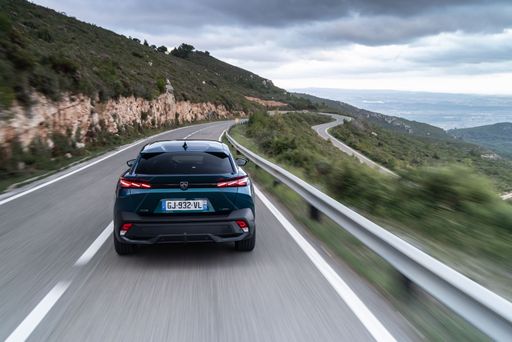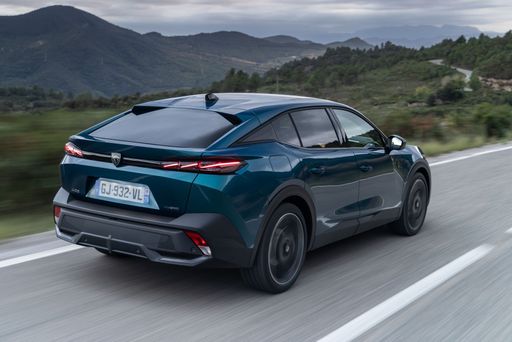Peugeot 408 vs Volvo XC40 – Which model is better for everyday use?
Both models have their strengths – but which one suits you more?
Compare performance, efficiency, price and space directly: Peugeot 408 or Volvo XC40?
Costs and Efficiency:
Looking at overall running costs, both models reveal some interesting differences in everyday economy.
Peugeot 408 has a barely noticeable advantage in terms of price – it starts at 35100 £, while the Volvo XC40 costs 36800 £. That’s a price difference of around 1645 £.
Fuel consumption also shows a difference: Peugeot 408 manages with 0.90 L and is therefore significantly more efficient than the Volvo XC40 with 6.50 L. The difference is about 5.60 L per 100 km.
Engine and Performance:
Power, torque and acceleration are the classic benchmarks for car enthusiasts – and here, some clear differences start to show.
When it comes to engine power, the Peugeot 408 has a somewhat edge – offering 225 HP compared to 197 HP. That’s roughly 28 HP more horsepower.
In acceleration from 0 to 100 km/h, the Peugeot 408 is slight quicker – completing the sprint in 7.20 s, while the Volvo XC40 takes 7.60 s. That’s about 0.40 s faster.
In terms of top speed, the Peugeot 408 performs evident better – reaching 233 km/h, while the Volvo XC40 tops out at 180 km/h. The difference is around 53 km/h.
There’s also a difference in torque: Peugeot 408 pulls to a small extent stronger with 360 Nm compared to 300 Nm. That’s about 60 Nm difference.
Space and Everyday Use:
Whether family car or daily driver – which one offers more room, flexibility and comfort?
Both vehicles offer seating for 5 people.
In curb weight, Peugeot 408 is hardly perceptible lighter – 1544 kg compared to 1688 kg. The difference is around 144 kg.
In terms of boot space, the Peugeot 408 offers to a small extent more room – 536 L compared to 452 L. That’s a difference of about 84 L.
In maximum load capacity, the Peugeot 408 performs a bit better – up to 1583 L, which is about 255 L more than the Volvo XC40.
When it comes to payload, Volvo XC40 slightly takes the win – 532 kg compared to 456 kg. That’s a difference of about 76 kg.
Who comes out on top?
Overall, the Peugeot 408 shows itself to be outperforms in nearly all aspects and secures the title of DriveDuel Champion.
It convinces with the more balanced overall package and proves to be the more versatile choice for everyday use.
 @ media.stellantis.com
@ media.stellantis.com
Peugeot 408
Peugeot 408
The Peugeot 408 captivates with its sleek and dynamic design, setting it apart in the competitive crossover market. Its interior offers a perfect blend of comfort and cutting-edge technology, creating an enjoyable driving experience. The model's efficient performance and modern features make it a compelling choice for those seeking both style and functionality in their vehicles.
details @ media.stellantis.com
@ media.stellantis.com
 @ media.stellantis.com
@ media.stellantis.com
 @ media.stellantis.com
@ media.stellantis.com
 @ media.stellantis.com
@ media.stellantis.com
 @ media.stellantis.com
@ media.stellantis.com
Volvo XC40
The Volvo XC40 is a standout model in the compact SUV segment, offering a delightful blend of Scandinavian design and practicality. Its interior is both stylish and functional, featuring premium materials and innovative storage solutions that make every journey comfortable. The car's performance is smooth and responsive, with advanced safety features ensuring peace of mind for drivers and passengers alike.
details @ media.volvocars.com
@ media.volvocars.com
 @ media.volvocars.com
@ media.volvocars.com
 @ media.volvocars.com
@ media.volvocars.com
 @ media.volvocars.com
@ media.volvocars.com
 @ media.volvocars.com
@ media.volvocars.com
 @ media.stellantis.com
@ media.stellantis.com
|
 @ media.volvocars.com
@ media.volvocars.com
|
|
|
|
Costs and Consumption |
|
|---|---|
|
Price
35100 - 44400 £
|
Price
36800 - 47200 £
|
|
Consumption L/100km
0.9 - 5.1 L
|
Consumption L/100km
6.50 L
|
|
Consumption kWh/100km
15.10 kWh
|
Consumption kWh/100km
-
|
|
Electric Range
77 - 453 km
|
Electric Range
-
|
|
Battery Capacity
58.20 kWh
|
Battery Capacity
-
|
|
co2
0 - 114 g/km
|
co2
147 - 148 g/km
|
|
Fuel tank capacity
42 - 52 L
|
Fuel tank capacity
54 L
|
Dimensions and Body |
|
|---|---|
|
Body Type
SUV
|
Body Type
SUV
|
|
Seats
5
|
Seats
5
|
|
Doors
5
|
Doors
5
|
|
Curb weight
1544 - 1879 kg
|
Curb weight
1688 kg
|
|
Trunk capacity
471 - 536 L
|
Trunk capacity
452 L
|
|
Length
4687 mm
|
Length
4425 mm
|
|
Width
1848 mm
|
Width
1863 mm
|
|
Height
1478 mm
|
Height
1652 mm
|
|
Max trunk capacity
1528 - 1583 L
|
Max trunk capacity
1328 L
|
|
Payload
371 - 456 kg
|
Payload
532 kg
|
Engine and Performance |
|
|---|---|
|
Engine Type
Electric, Petrol MHEV, Plugin Hybrid
|
Engine Type
Petrol MHEV
|
|
Transmission
Automatic
|
Transmission
Automatic
|
|
Transmission Detail
Dual-Clutch Automatic
|
Transmission Detail
Dual-Clutch Automatic
|
|
Drive Type
Front-Wheel Drive
|
Drive Type
Front-Wheel Drive
|
|
Power HP
145 - 225 HP
|
Power HP
163 - 197 HP
|
|
Acceleration 0-100km/h
7.2 - 9.4 s
|
Acceleration 0-100km/h
7.6 - 8.6 s
|
|
Max Speed
160 - 233 km/h
|
Max Speed
180 km/h
|
|
Torque
230 - 360 Nm
|
Torque
265 - 300 Nm
|
|
Number of Cylinders
4
|
Number of Cylinders
4
|
|
Power kW
107 - 165 kW
|
Power kW
120 - 145 kW
|
|
Engine capacity
1199 - 1598 cm3
|
Engine capacity
1969 cm3
|
General |
|
|---|---|
|
Model Year
2024 - 2025
|
Model Year
2024
|
|
CO2 Efficiency Class
A, C, B
|
CO2 Efficiency Class
E
|
|
Brand
Peugeot
|
Brand
Volvo
|
What drivetrain options does the Peugeot 408 have?
The Peugeot 408 is offered with Front-Wheel Drive.
The prices and data displayed are estimates based on German list prices and may vary by country. This information is not legally binding.
